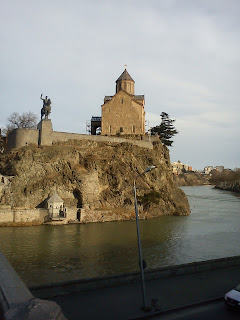Ask many questions, and give one appropriate answer
When discussing
sustainability there are a series of questions that must be asked. The right
questions help planners not only quantify the carrying capacity of a
destination, but also the ideal point of balance (see https://sustainableexperience.blogspot.com/2020/07/re-calling-forth-sustainable-tourism-ii.html)
.
Many aspects
have to be scrutinized: whether local life and culture are altered so that
long-term integrity cannot be guaranteed, and that question stretches to the to
the physical environment and the ecosystem.
Furthermore,
the labor market that has developed in the tourist destination must be
assessed, and therefore whether employment has been created and what type of
employment, e.g. if tourism is just creating low-wage, seasonal jobs.
In order for
the approach to be holistic, questions should be asked about the role played
not only by those who immediately profit from tourism, but also to all stakeholders
potentially involved in promoting and regulating it, e.g. the government, the
local administration. The public, the private sector, the world of marketing
and communication: to what extent is a synergy between these actors enabling a
sustainable growth?
And further
widening an inquisitive gaze: how is the growth of the tourism sector impacting
other economic sectors of a specific destination? For example: is tourism
hampering the creation of a more differentiated economic environment? Is the
attractiveness to tourism jobs depriving of human resources other professional
sectors? Is it necessary to take counter-measures? Such measured could be
beneficial for tourism as well. Let’s say craft and agricultural professions abandonments
are taking place because young professionals are attracted to jobs in tourism.
Encourage them to preserve traditional occupations might prove to be in long
terms in investment for local attractions. Definitely, this would be beneficial
to tourism.
Pertinent
questions are those that allow to define and circumscribe a problem, to break
it down and to help hypothesize an answer.
One of the
key questions is the one I shortly referred to at the beginning of this brief
post: the carrying capacity. How many tourists should a destination have for be
the tourism sustainable for all the parties involved? And how should the
tourists be scattered on the territory? How should accesses be regulated to
specific attractions?
Some areas,
should enjoy a special protection and regulamentation: monuments, eco-treks,
economic-social and/or ecological realities, holy shrines etc. These might
require to be closed, with a limited or regulated access, and their economic
sustainability should be guaranteed as well.
Some tourist
attractions are created as such. Others assume later in their history a tourist
use. And this open the dilemma about accesses, reservations, and fees. For
natural treks this is particularly true.
The tourist
use bestows additional costs for preservation and requalification of many
attractions, including natural ones. And who’s going to pay for it?
Each option
is open. The debate is planetary and there are examples to be inspired by, from
natural parks to sacred architectures. Various sites and various destinations
have opted for different models and it is not necessary to start from scratch.
It is true
that each destination has peculiarities and there is not a one fits all
solution. So when asking how to manage it, many other secondary questions to be
asked.
But there is
one answer that fits all questions: tourists are to be included as actors in any
strategy chosen. Whatever the strategies adopted are, they must be conveyed,
through an inclusive communication campaign.
Visitors
must always be involved and made aware of tourism policies in a destination.
They are not only a marketing target; they will be agents in the territory
albeit temporarily.
It is
appropriate and necessary that tourists are informed agents and that they have
been instructed on how their participation is understood and on how they
integrate into the tourism policies of the destination.
For sports
tourism, they have to be carefully instructed about how their interaction with
natural resources will be considered sustainable. Therefore, knowledge is
required.
The
questions here are: what do our sportspersons know about our territory? What do
they need to know to behave appropriately? Are we supplying them with all the
information required? How can we share our knowledge in a way that will be
interesting for them, and become part of their experience here?
One good
example of a successful implementation strategy to achieve this goal is what
was done in Finale Ligure on the occasion of the Wembo MTB competition. Before
the race riders were taken along the racing treks and a local nature
photographer and guide, member of the WWF, guided them. Racers were explained
what the natural plants and endogenous species are, and as a result they not
only enjoy more the stay and the landscape, but were more aware of their impact
and on the desirable behavior in a given piece of territory.
Knowing
means be in the condition of understanding.
Understanding
means be in the condition of taking the right steps, sometimes not only
figuratively.


Commenti
Posta un commento